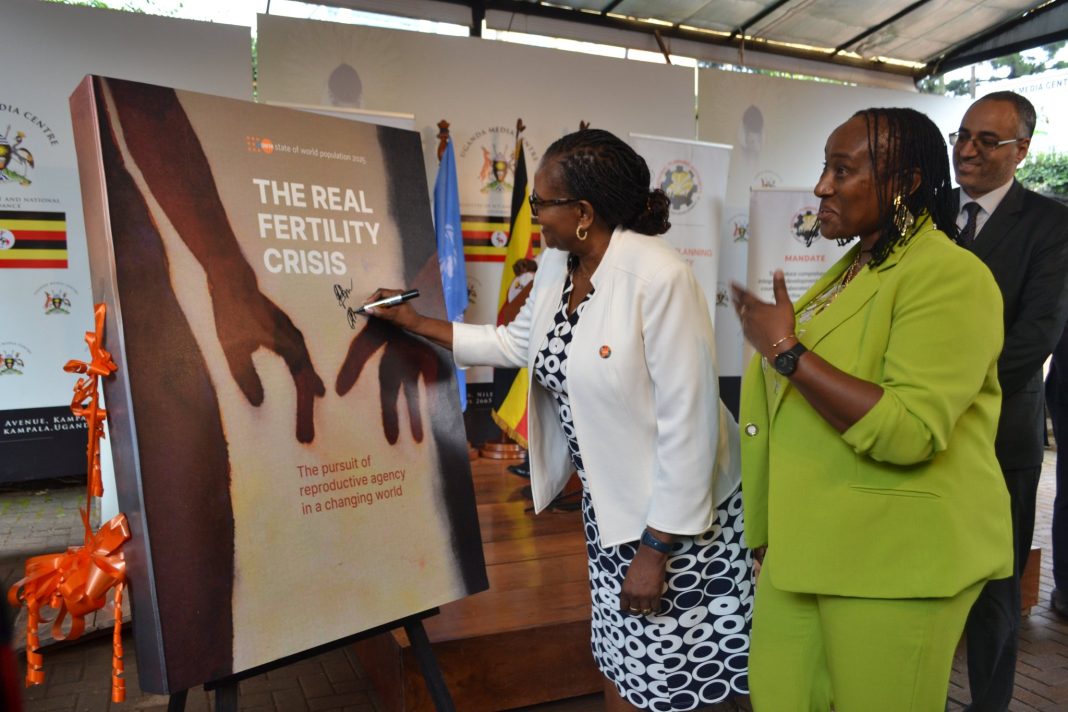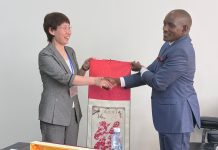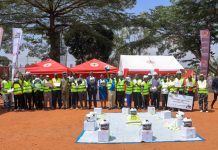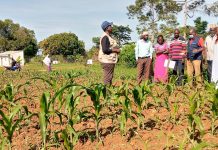By David Mwanje
KAMPALA- The 2025 State of the World Population Report, unveiled at the Uganda Media Centre, redefines the global demographic challenge under the theme “The Real Fertility Crisis: The Pursuit of Reproductive Agency in a Changing World”. Launched by the United Nations Population Fund (UNFPA) and presented by Dr. Gift Malunga, UNFPA Representative in Uganda on behalf of the National Planning Authority, the report shifts the narrative from population numbers to the urgent need for reproductive choice. In Uganda, where the fertility rate has dropped from 6.2 to 4.5 children per woman over the past decade, this message highlights both progress and persistent barriers.
The report, first released globally on June 10, reveals that one in five people worldwide cannot achieve their desired family size due to economic hardship, gender inequality, and social pressures. In Uganda, a UNFPA-YouGov survey found 39% of respondents citing financial constraints, particularly childcare costs, as a major obstacle. “Economic barriers don’t just limit budgets they limit dreams,” Dr. Malunga told attendees. Globally, over half of respondents echoed economic concerns, while one in three reported unintended pregnancies, underscoring a lack of reproductive agency. Dr. Malunga emphasized, “The issue is lack of choice, not desire, with major consequences for individuals and societies.”
Uganda’s Parish Development Model (PDM) offers hope, empowering 33% of subsistence households to join the money economy. “PDM brings services to the doorstep, giving families the power to plan their futures,” Malunga said. By delivering healthcare and education directly to communities, PDM aligns with the report’s vision of enabling informed reproductive choices through access to essential services and economic opportunities.
The report’s insights are shaping Uganda’s policy landscape through the Fourth National Development Plan (NDP IV), launched by President Yoweri Museveni on June 5, 2025. Aiming to grow Uganda’s economy from $53.7 billion to $500 billion by 2040, NDP IV prioritizes agro-industrialization, tourism, mineral development, and innovation. These sectors promise jobs and economic stability, addressing pressures that limit reproductive choices. The National Planning Authority, now integrating population and spatial planning, is embedding these priorities into its strategies to ensure sustainable development.
Uganda will carry this momentum to World Population Day on July 11 in Kayunga, themed Promoting Population Health and Well-being through the Parish Development Model. The event will spotlight PDM’s role in boosting household incomes and service access, supporting the report’s push for affordable childcare, quality education, and measures to end poverty-driven practices like child marriage. However, the report warns that Uganda’s fertility decline, while a sign of empowerment, risks falling below the replacement level of 2.1 children, potentially straining future demographics. “Reproductive agency is the heart of sustainable development,” Malunga stressed.
Supported by the Embassy of the Kingdom of Sweden, the launch reaffirmed Uganda’s commitment to reproductive rights. As the National Planning Authority prepares the State of Uganda Population Report, the nation is poised to align global insights with Vision 2040. By leveraging NDP IV and PDM, Uganda aims to transform the fertility crisis into an opportunity for empowerment, ensuring every citizen can shape their family’s future with dignity. The report’s call for affordable housing, decent work, parental leave, and comprehensive reproductive health services offers a roadmap for a future where choices are not a privilege but a right.























